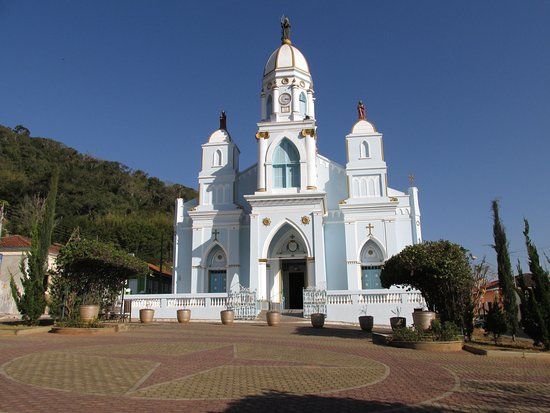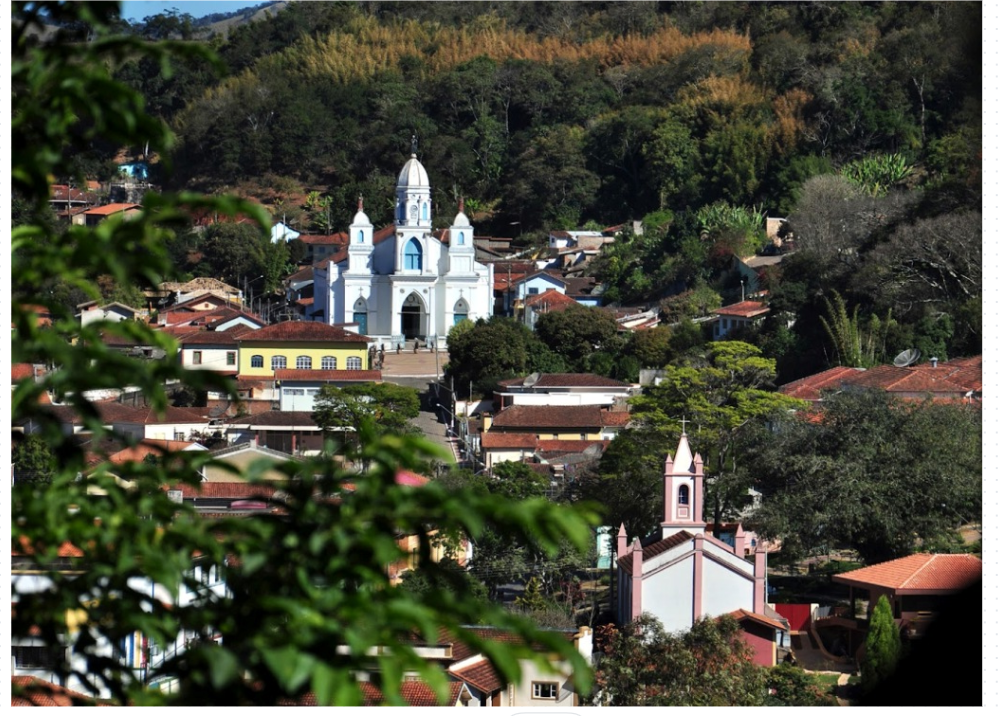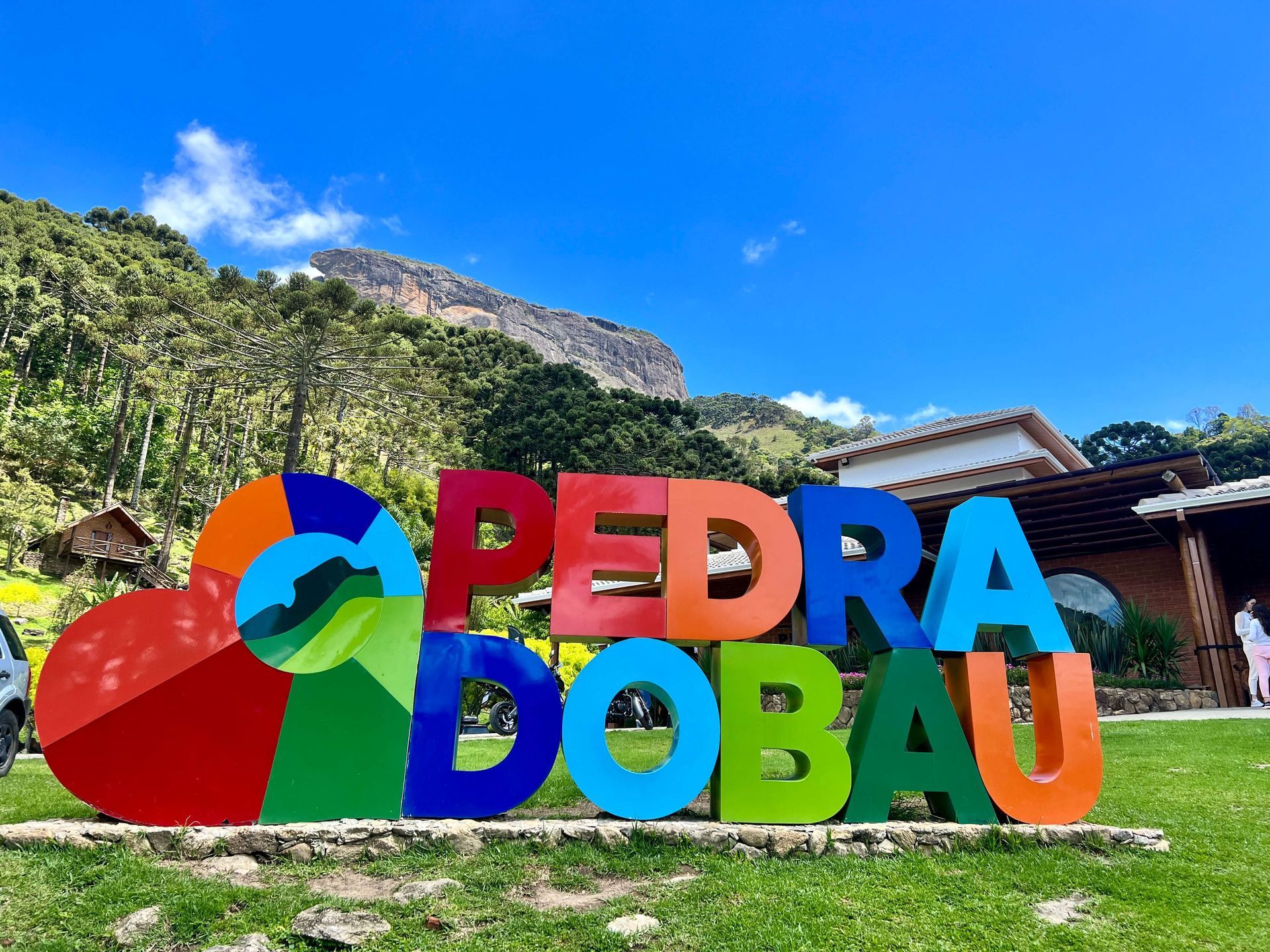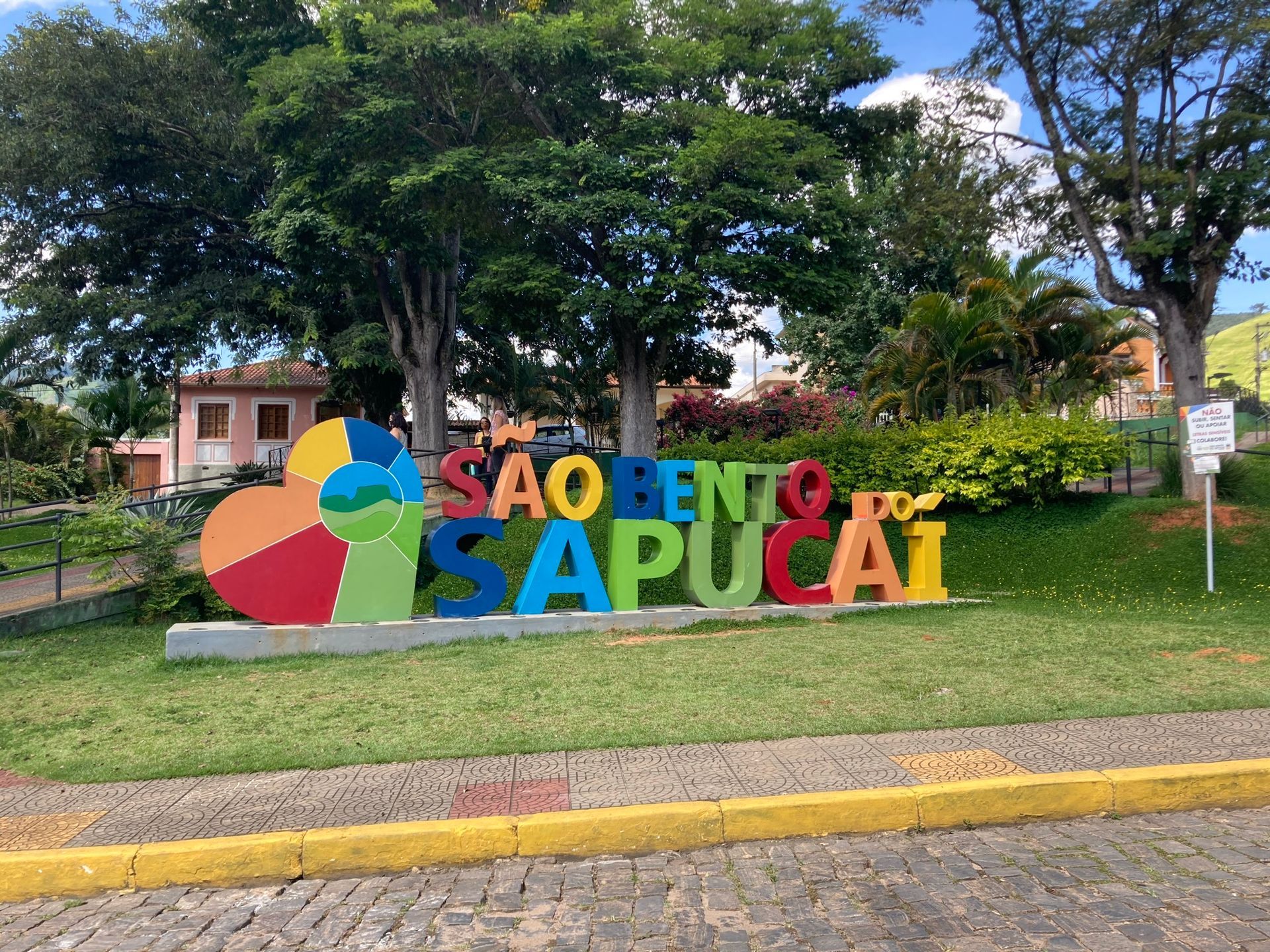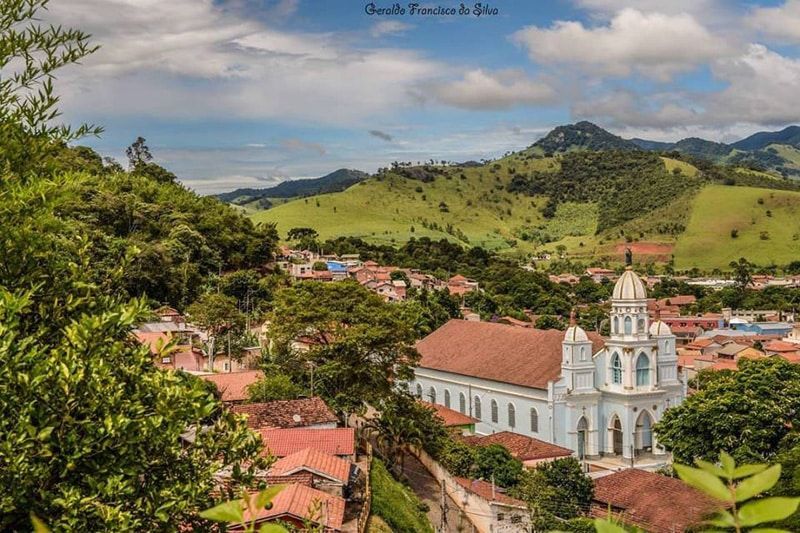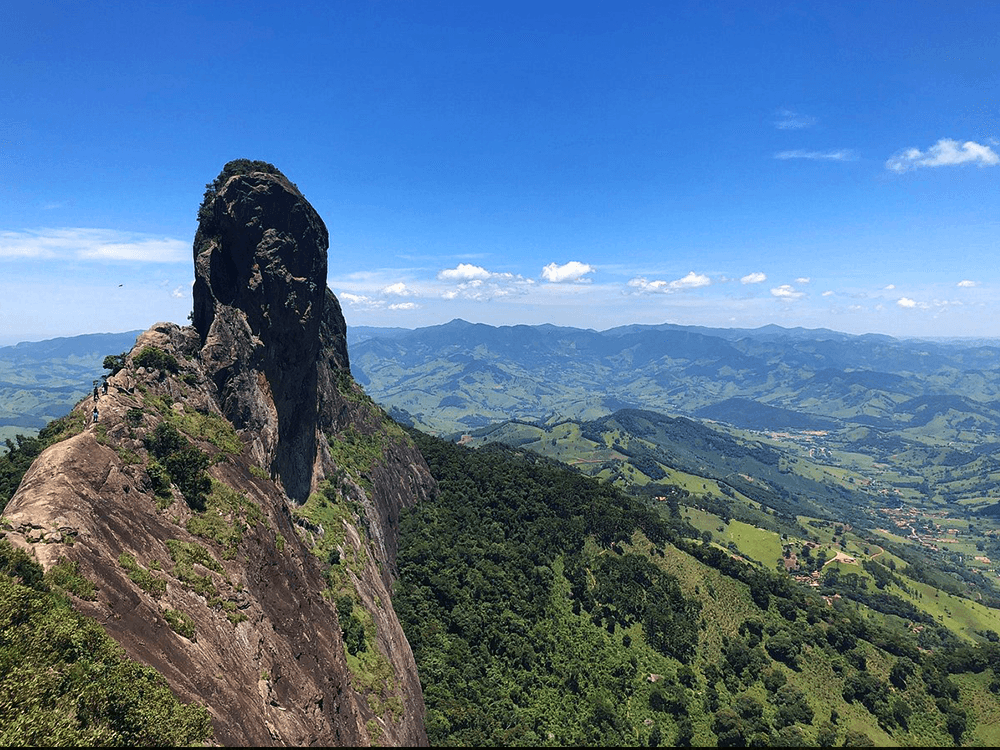Saint Benedict of Sapucai - SP
On this page, the Portal Peregrino da Esperança presents the city of Paraisópolis, whose name literally means "paradise city". The main church dedicated to the Virgin of Sorrows has become a symbol of protection and hope for those who seek to build a life there marked by work, unity and belief in divine intercession.
🕊️ "The anguish of having lost does not surpass the joy of having once possessed."
(Saint Augustine)
Features of the City of São Bento do Sapucaí - SP
The city of São Bento do Sapucaí, located in the interior of the state of São Paulo, is a municipality that combines with rare harmony the serenity typical of inland cities with the natural grandeur of the Serra da Mantiqueira mountains. Surrounded by lush landscapes and green valleys that stretch between rocky elevations, the city is known not only for its scenic beauty, but also for its peaceful and spiritual atmosphere, which attracts visitors seeking tranquility, contact with nature and cultural and religious experiences. Its name pays homage to Saint Benedict, the holy patriarch of Western monasticism, and refers to the devotion that accompanied the first settlers of the region, whose roots were established in the Christian faith and simple work on the land.
Historically, São Bento do Sapucaí was born from the separation of other towns in the region, growing from a nucleus of settlers who found a fertile and sheltered place in the Sapucaí River valley. Over time, the town developed based on agriculture, livestock farming and crafts, maintaining a strong connection with rural practices and traditional ways of life to this day. Religion has always been present in its daily life, manifested in patronal festivals, processions, liturgical celebrations and in the respectful way in which the population relates to the sacred. Faith is lived naturally, permeating social relations and contributing to the strengthening of the sense of community.
The city also stands out as a nature tourist destination, sought out by adventurers, pilgrims and ecotourism enthusiasts who are enchanted by its trails, waterfalls and especially by the iconic Pedra do Baú complex, one of the region's biggest attractions. This grandiose setting of the Serra da Mantiqueira contrasts with the simplicity of the narrow streets, historic houses and the calm pace of local life. As you walk through São Bento do Sapucaí, you can see how time seems to move differently, inviting you to contemplate, have casual conversation and cultivate a more serene and introspective life.
With a welcoming population and a territory rich in culture, history and nature, São Bento do Sapucaí has become a place of reference for those seeking balance between the sacred and the everyday, between modernity and tradition. Its identity is built on a deep respect for local roots, spirituality and the natural environment that surrounds it, which makes it not only a tourist destination, but a place to reconnect with oneself. The city thus represents a rare synthesis of beauty, simplicity and depth, being one of the most authentic treasures of the interior of São Paulo.
The presence of the city of São Bento do Sapucaí on the Águas da Prata branch of the Caminho da Fé represents one of the most memorable and intense moments in the journey of pilgrims heading to the National Sanctuary of Our Lady of Aparecida. Located amidst the mountains of the Serra da Mantiqueira, the city stands out not only for the beauty of its landscape, but also for the spiritual strength that emanates from its territory, becoming a point of rest, contemplation and renewal for those who face days of walking driven by faith. Upon arriving in São Bento do Sapucaí, the pilgrim is enveloped by an atmosphere of serenity and welcome that invites introspection and gratitude, as if the environment itself collaborated with the purpose of the walk.
The journey through São Bento do Sapucaí is marked by physical challenges, due to the steep climbs and winding trails that cross the mountains, but also by moments of intense natural and spiritual beauty. The city offers pilgrims the possibility of direct contact with the grandeur of creation, reflected in the deep valleys, the silent forests and the monumental stones such as the famous Pedra do Baú, which rises in the distance as a symbol of overcoming. This imposing geography reinforces the symbolism of faith that rises in the midst of difficulties, reminding the pilgrim that each step, even the most arduous, leads to a destination of hope and inner fulfillment.
When passing through São Bento do Sapucaí, the hiker encounters a community that understands the profound meaning of the Caminho da Fé. Whether through simple inns, open chapels, shared meals or simply a silent gesture of welcome, São Bento do Sapucaí becomes an oasis where the body finds rest and the soul is strengthened. The faith experienced in the daily life of the city intertwines with the faith brought by the pilgrim's steps, creating a space of silent and profound communion.
A visit to São Bento do Sapucaí is, therefore, a moment of fusion between nature, spirituality and community. The city reveals itself as a kind of open-air sanctuary, where each element of the route seems to carry a symbolic meaning and each experience resonates in the heart with greater intensity. In the context of the Águas da Prata branch, São Bento do Sapucaí represents a high point — not only in geographical terms, but also in spiritual terms — where the pilgrim finds not only breathtaking landscapes, but also the opportunity to reconnect with the purpose that made him set out. It is a place where the path transforms, even if only for a moment, into a destination.
The history of the main church of São Bento do Sapucaí, in the interior of the state of São Paulo, is deeply rooted in the origin and development of the city itself, reflecting the intimate relationship between the Christian faith and the formation of the communities of the Paraíba Valley. Dedicated to Saint Benedict, the city's patron saint, the church dates back to the early 19th century, when the first residents of the region, mostly farmers and cattle drivers, built a rustic chapel as an expression of their devotion and need for a common space for religious practice. This initial chapel, built through collective effort, became the spiritual and geographic embryo around which the city would grow in the following decades, establishing itself not only as a religious center, but also as a hub for coexistence and social organization.
As the population grew and local faith grew stronger, the chapel was gradually replaced by a more solid building, which would become the main church of São Bento. Over the years, the temple underwent renovations, expansions and beautifications that accompanied the city's transformations and the maturation of the community's religious identity. Its architecture, although simple, carries historical elements that harken back to the colonial period and the baroque influences that marked many of the churches in the interior of São Paulo. The constant presence of the bell, the festivities in honor of the patron saint and the altar dedicated to the holy monk reinforce the centrality of the church in the cultural and spiritual life of São Bento do Sapucaí.
Devotion to Saint Benedict has become a hallmark of the city, with the main church being the stage for the main religious celebrations, especially during the patron saint's festival, which brings together locals and visitors for moments of faith, fellowship and tradition. Solemn masses, processions, novenas and cultural performances bring the city to life, reaffirming the bonds between the sacred and the community. In addition to the festive celebrations, the church plays an essential role in the daily lives of residents, being the place where the main rites of passage are celebrated – baptisms, weddings and funerals – which mark the stages of life with spiritual and collective meaning.
The main church of São Bento do Sapucaí is, therefore, more than a religious building; it is the guardian of the memory and faith of a people who grew and strengthened themselves around their spirituality. Its walls have witnessed the history of generations who found comfort, guidance and communion there. Amidst the mountains of the Serra da Mantiqueira, the temple remains a visible sign of the perseverance of faith, the importance of tradition and the beauty of simplicity. The main church not only celebrates the past, but also projects itself into the present as a meeting point between the history, devotion and community life of a city that carries in its name and in its soul the heritage of São Bento.
Photographs of the City of São Bento do Sapucaí - SP
